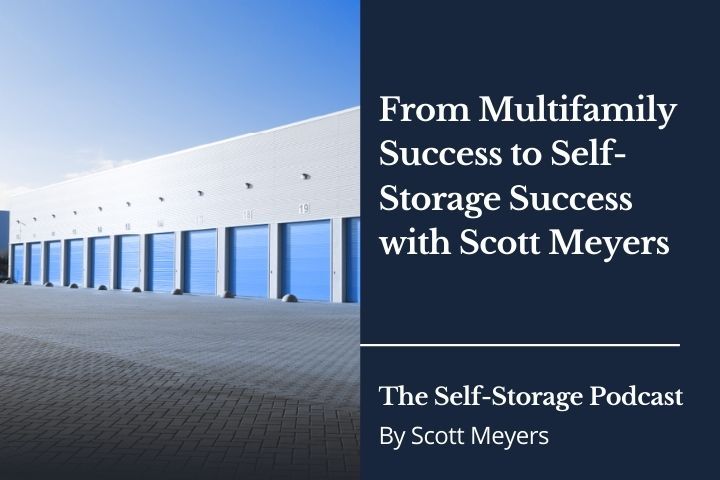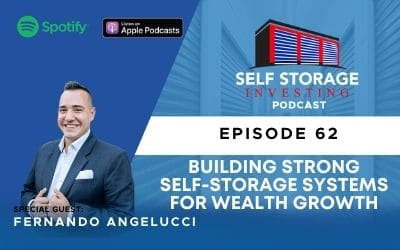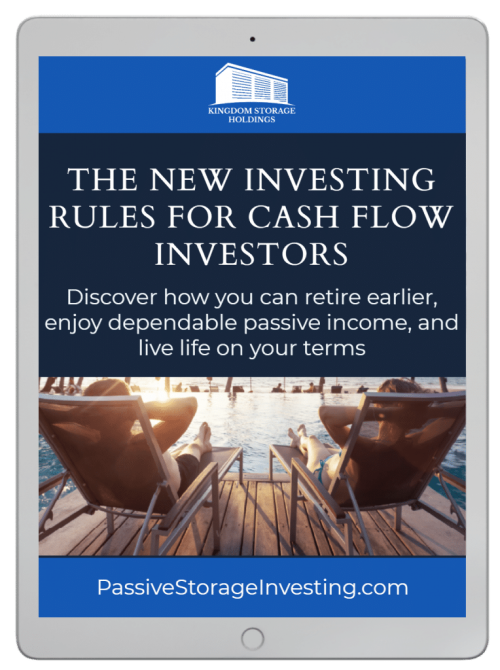In this episode Scott discusses the current state of the Self-Storage industry and why it’s attracting new investors. With other asset classes experiencing a downturn, Self-Storage remains a lucrative investment option.
Scott explains how self-storage thrives during economic downturns as businesses and individuals downsize, leading to increased demand and rental rates. He also highlights the benefits of investing in self-storage during a recession and the opportunities it presents. This episode provides valuable insights for those interested in entering the self-storage market or looking for alternative investment options.
WHAT TO LISTEN FOR
1:25 Why Self-Storage during economic downturns
8:26 A solid plan for getting started in Self-Storage
10:14 The vital importance of writing a business plan
23:00 How to really understand cashflow
CONNECT WITH US
Website | You Tube | Facebook | X | LinkedIn | Instagram
Follow so you never miss a NEW episode! Leave us an honest rating and review on Apple or Spotify.
Episode Transcript
Scott Meyers (00:00):
Think you need to take a step back and it truly all starts with a business plan.
Doug Downs (00:13):
This is the Self Storage podcast where we share the knowledge and skills from the industry’s leading investors, developers, and operators to help you launch and grow your self storage business. Your host, Scott Meyers, over the past 18 years has acquired, developed, converted, and syndicated nearly 5 million square feet of self storage nationwide with the help of his incredible team at selfstorageinvesting.com, who has helped thousands of people achieve greatness in self storage.
Scott Meyers (00:48):
Hello everyone, and welcome back to the Self Storage Podcast. I’m your host, Scott Meyers, and on today’s episode, we decided to mix it up a little bit. There’s a whole lot of folks out there that are looking at self-storage for the first time. There’s a whole lot of folks that are looking at self-storage because many of the other asset classes are not doing so well in this next economic cycle that we find ourselves in or that heading you. Yes, we around here, if you’ve been listening to the self-storage podcast for any amount of time, we spend a lot of time talking about when are we going to see a downturn? Are we in the downturn? Are we in the recession? Because that folks is our Super Bowl, this is when we shine. Self storage does extremely well because businesses downsize. Individuals downsize and occupancy goes up, demand for storages up, and therefore rental rates are up as the rest of the real estate asset classes or the marketplace starts to decline or tank self-storage gets the hockey stick effect as we head into this time period.
(01:46):
As you can imagine, we as an investment company are very busy right now and our education company and our mastermind, well, it’s the same. There’s a whole lot of folks that have now hearing about self storage maybe for the first time or it’s been sitting in the back of their minds and they’re thinking, okay, I’m seeing what’s happening. Or perhaps the investments that I’m in right now or the business that I find myself in, I’m a full-time investor and things are not going so well in my multifamily business, my assisted living business, my mobile home parks, my single family rentals, my Airbnbs, whatever that may be. And so we around here, well, we’re ramping up so much, so we’re adding staff to handle the influx of students and people that need consulting and teaching, coaching, mentoring resources, and even for the partnerships that we’re now forging with those folks that are coming to us because we here at Self Storage Profits Incorporated, we are the leading resource for teaching people how to get into this business.
(02:41):
And so what I wanted to do is to take a step back because what’s more fun for me, I get asked to speak a lot. We speak on our own stages and at our event, I get asked to speak at other people’s investment events, and I’m not retiring anytime soon. By the way. There is no such thing as a, I think that it’s something we all made up. I’ll slow down, but I also, I’m at a stage in my career now where I can be selective, and so I don’t go out and speak on many stages, but the ones that I choose to speak at are the ones in which I’m not getting paid to do so I don’t have to sell anything, but in which I get to really kind of sit back and reflect on my 30 years in real estate and to display what I consider wisdom, and that is from the scar tissue from being in real estate for 30 years, but to then pass that on to the next generation.
(03:29):
For me and our organization right now, it’s really all about impact and significance and legacy. And the ways of doing that is by imparting what we’ve learned, how we got that scar tissue, why we sometimes walk with a limb from some of the things that we’ve learned in the past to maybe help some folks avoid some of the challenges and the mistakes and the pitfalls that we endured as we launched our business, as well as begin to then scale our self-storage at business. And so the best way of making that happen is to, well answer your questions directly. And so I love to go to the events where I’m on a panel or where people just get to fire questions at me and I get to talk about what we’ve seen, what we’ve done the many times that we’ve be experienced, usually that question or that challenge that people have and how we’ve navigated through that and how we have come out on the other side successfully.
(04:19):
And then more importantly, how and why we can see that coming maybe a little bit sooner or earlier than other folks who haven’t been through and haven’t had the experience that we’ve had over these years. So what we’re going to do today is we’re going to dip into our mailbag. And so for the first time, share that. And although there’s, well, very rarely can you find a physical mailbag, people don’t send me letters and discussing. However, guess what we’ve got, Doug, our producer, he has created the mailbag as you heard in the background, not only literally but physically. And so we’re going to tap into the questions, many of the questions that we get on a regular basis. But here’s what we’re going to do. This is nothing new to podcast land. If you’ve been listening to podcasts for any amount of time or really any type of a radio show or any type of format, news format in which people will dip into their mailbag, well, we all know that it’s fixed and it’s staged, and they pull out letters and maybe even create some so that they can, we will give the answers that they want their audience to hear or maybe then in a roundabout way sell them something or point back to themselves or whatever that may be their agenda.
(05:30):
And that that’s the case for everyone. However, to make sure that that is not the case, and of course you don’t know this, but Doug is going to, he’s going to dip into the mailbag and he has questions that were set in that I don’t seen. We have no agenda here. All we’re doing is we know that when the self-storage investor gets better, our industry gets better and we do better deals and we get to go farther and faster together. So that’s our early goal around here because when that happens, and the more people we educate and show how to do this industry and this business the right way, the more opportunities we have to partner with folks that are doing it the right way and opportunities we are able to take a look at. So by dipping into the mailbag and answering your questions that today, this is all about fun for me because it’s all about me. Most shows are, but today’s show is, and so this is my favorite format. And so Doug, first of all, let’s everybody welcome Doug to the show. Doug, how are you today?
Doug Downs (06:28):
Great to be here. I’m used to doing the intro at the very front part of the podcast, but awesome to be on the podcast itself.
Scott Meyers (06:35):
Well, and for the record, Doug is always here, but he’s just in the background is I’m interviewing guests or if I do my one-off podcast and where I’m just essentially teaching, we’re speaking, but today what he’s going to do is take a more active role. And so he is taken the good news about this and the good part about this is that Doug can look at this through a different lens. Yeah, he’s learning about self-storage by way, listening to myself and our guests, but he’s not in the business and so he’s still a newbie. And so he has a different set of eyes on these. He has a different perspective. He has a different way of looking at these questions. And so I’ve intentionally told him, give me the zingers, give me the tough ones. You don’t need to lob anything in. I should be able to answer anything flatfooted for the most part, we’ve been at this for a little while, but if not, we’ll be honest and say, Hey, we need to look into that and we’ll cover it in the next episode or really a curve ball. Well, you’ll never know because we’ll just edit it out because we don’t want to embarrass myself on here. So with that, we’re going to be brutally honest. And so with that, Doug is just going to dip into the bag and begin to pull out questions that he’s looked at. Doug, anything, any ground rules or anything else you want to say before we begin?
Doug Downs (07:43):
No ground rules. I hate ground rules in the podcast, so let’s take all the ground rules out. What I did was I cherry picked the questions that I genuinely want to ask because when you and I started talking about self-storage, and you’re right, I’m not in the business, but my house is a mess. And so when we talked about self-storage, I always look at things from the demand side and if the demand is there, the opportunity could be there, depends on how much supply, the right simple stuff. But the more that I listen to your podcast, the more I’m seeing actually there are opportunities there. So I cherry pick the questions that others have written in, but I genuinely want to ask. So the first one is I’ve been interested in self storage investing. What is step one, the first thing I should do to potentially get started?
Scott Meyers (08:36):
Well, first of all, I’m going to start Doug, and for the person who asked that question by stating what most people want to do and they gravitate towards, and I’m going to tell you not to do it because not everybody’s going to listen to me anyways for what I’m going to say next. And that is most people start by thinking they have to have a logo and they have to have a name, and they have to create a brand for themselves. Well, I hate to say this, folks to tell you this, but if you don’t have a facility, you don’t have a brand, you don’t have a business, you don’t have anything. So it starts by getting a facility. So you need to ramp up your marketing efforts. I think you need to take a step back and do a little planning first. And so I’ll try to answer this in a linear fashion.
(09:16):
I think you need to determine what is the end goal. We always look at every investment from the end in minds, what is our exit strategy on this particular facility? You begin to go down a path where you’re just looking at anything and everything and then you start buying or you start to developing and creating a business, but you’d have no exit strategy in mind or really no true thought or idea behind why you’re building this in the first place and what do you plan to do with it when you sell it, meaning the facility or your portfolio? Well, then you’re going to kind of be going and you may find that after a while you just have a mishmash of facilities or a portfolio that you really don’t want. They’re not really working well together. You can’t manage them very well. There’s no synergies because they are all over the board.
(10:01):
So I think you need to take a step back and it truly all starts with the business plan. Now, I know there’s a whole lot of folks out there that just got really, really distraught and thought, wow, now I need to sit down and write a business plan. I don’t even know where to start. And what does that mean? Is that the back of the napkin business plan? It takes me five minutes and I will say, no, it’s not. It’s the 30 to 40 page business plan where you spell out just exactly what you’re going to do, where you’re going to do it, how are you going to do it, how are you going to staff it, your budget, your timelines. The good news is there are many resources out there. Help people to get started on a business plan so that they know what areas they need to be considering.
(10:39):
And so first of all, the business plan is for you so that you can get your head on straight and it’ll force you to go through section by section and give consideration to, gosh, what market do I need in? Should I be a two hour drive from my house? Is that 90 minutes? Is that 90 miles? What if I can’t find what I’m looking for? I’m willing to go two hours, I’m willing to go a little bit farther, or do I really want to reduce my buy box to something that’s really just in my town? And so it’s very close by and it works well and it fits into my travel schedule with my current portfolio of houses or apartments or whatever that may be. What is the size, how am I going to manage these? And that goes hand in hand. If there’re smaller facilities, this is going to be difficult to manage.
(11:19):
Do I really want to have a gaggle a group? Do I want to buy a lot of small cell storage facilities because they’re difficult to manage? So maybe I set my parameters of saying nothing below 20,000 square feet or nothing below 200 units. So you just begin to define your business. And so again, that’s not only for you, but when it comes time after you’ve ramped up your marketing efforts and you’ve began talking to brokers and you’re sending out the direct mail or pieces and the sellers begin to bring opportunities to you, and so do the brokers and you make an offer. When you go to the lender, what’s the first thing that they’re going to ask you for? This is the business plan. Let’s say, okay, I’ve got a facility. I see this facility and we’ll underwrite this Scott, but can you share with me your business plan and how does this fit into that?
(12:02):
And if your answer is, or once they ask you, can you send over your plans and we begin to look at this as part of the package and your answer is, then guess what? That 30 to 40 page business plan as you can imagine from what I just told you or what I just mentioned, is going to take you not overnight, you won’t be able to put this together overnight and send it to your lender. This is going to take you about 20, 30 hours is so quiet time. And to be able to sit back and develop that business plan and understand just exactly who you want to be in the business, what you’re going to go after, where you’re going to operate, how you’re going to operate, and then what is the exit strategy. So that way when you submit your loan requests to the bank and they ask you for your business plan, well, this facility matches up and it fits it.
(12:48):
So therefore there is no question to this lender and therefore loan committee as to why this property shouldn’t be in your portfolio. It matches the same criteria that you’ve just mentioned and it shows how you’re going to do it. And again, it’s kind of pretty common that people submit their business plan with their loan requests anyways, that’s what the lender’s going to request and ask for, but even lenders that aren’t used to seeing that, it’s going to put you a leg above because many loans are going to go into loan committee that week or that month with this lender, and the ones that make it to the top of the heat are the ones that are the most prepared, that have the most amount of due diligence and a business plan tied with them and a professional approach. So you can’t supply too much information to your lender when it comes to that time.
(13:30):
So step one, and I know Doug, we answered that one, spent a lot of time on just that one question, but it really does start with the business plan before you really begin. And then when you start to look at and peak at opportunities, you could point back to your business plan and say, Hey, I put a lot of time thought maybe prayer into this, and this deal does not fit. This is three states away and it’s 15,000 square feet. And I said, I want to be within a two hour drive and nothing below 20,000 square feet. So even though it looks like a good deal and I’m excited because I found one and somebody called me back, I’m not going to buy it because it doesn’t fit my business plan. Does that make sense?
Doug Downs (14:06):
That does make sense because ultimately your first audience is whoever is going to be providing you with that loan to start your business. All they want is the business plan, right?
Scott Meyers (14:15):
Correct. That’s it.
Doug Downs (14:16):
They want. Yeah. So why the brand, the logo, the mission statement,
Scott Meyers (14:21):
Meh, you can do that. You’ll fill out that L L C in many cases. Well, first of all, you’re not going to do it until after you get through due diligence anyways because you don’t even have a deal. Why bother? And you can do that, and sometimes we’ll assign it or create a partnership or a joint venture before we go to closing, and it could be days before that we create that L L C. It’s just a shell, it’s just an entity and then an operating agreement that goes along with it. So you don’t have to build a focus group of people at the soccer game to look at your and the colors and the name of your facility. This can be done ahead of time and it’s just a shell anyways. You’ll create the brand after that and you won’t do that until you open up or you’re just going to assume the brand that’s already in place.
Doug Downs (15:01):
So let’s break that answer apart. You’re building the plan that ultimately is the strategy. You have a lot of questions that are basically asking, how do I develop a winning self-storage investment strategy?
Scott Meyers (15:16):
So building a winning self-storage investment strategy only happens when you find a deal that fits that criteria. You’re not overpaying in a market that is oversupplied. I mean, that’s kind of the bottom line. So it begins then with looking at this opportunity. You don’t have a deal until you’ve gone through underwriting and you’ve analyzed the facility and then analyzed the market. Right now you’ve got an opportunity that landed on your plate. We don’t know if it’s a deal until it goes through that process. So we first begin by taking a look at the facility itself, not only the physical aspects of it, but then the financials because that’s what real estate is, especially income producing real estate. The value of it is the amount of cash that it throws off the net operating income, the cash after all expenses have been paid, and then including loan repayment back to the bank.
(16:07):
And so that could be gleaned by looking at what are facilities recently trading at, what have they been selling for? What type of a capitalization rate have they been selling for in the market right now that we’re in and the physical market that it’s located in and like kind facilities, we talk about class A, class B, and class C facilities are, if this is a class C facility that you’re buying a turnaround value add, then what have the other class C facilities been trading at? What type of cap rates have they been trading at? Once you drill down, you do your due diligence, you’ve got all of the income items, you’ve got all of your expense items, including the future expense items and how you’re going to operate the business. You land on that N O I divided by a market cap rate, and that should give you a value for that facility.
(16:46):
So if all looks good, and that is in comparison to the purchase price, that is your value compared to the purchase price, the next step is to begin to look at the market. Because if this is a value add facility, and let’s say this is a, it’s sitting at 60% occupancy and your goal is to take it to 90 to stabilize it, well then you need to take a look at the market. Because if the market happens to be oversupplied and all of your competitors in a five mile radius are all sitting at 60 to 65% occupancy, well then guess what? You are stabilized. Unfortunately, you’re not going to be able to take it up to 90. There’s nothing special that you’re going to be able to do above anybody else, even if you lower rates. And if you lower rates, then guess what? Now you’re devaluing the facility that you just put a value on, a particular value on. So you need to take a look at the market next. See it supports this facility and you are growth that you have projected within the project itself. Then and only then is it time to decide whether to move forward or not.
Doug Downs (17:45):
Okay? So then again, digging deeper into that answer, another question you asked a lot here in the mailbag is how do identify the undervalued properties and create a forced appreciation plan? That’s the golden mecca, right? We all want to find something that has value, but for some reason the market has missed and you found it. So is there a checklist? Is there a recipe? How do I do this?
Scott Meyers (18:15):
The telltale signs in the beginning are if you’re physically looking at, I mean most of our searches begin with brokers bring us deals, our student partners bring us deals direct mail. Once we have these opportunities that land on our desk, we do the quick underwriting and we can see that if we can glean or have an understanding of the range or the rough asking price, we assume there’s upside in leasing up the balance of those units. And then as we take a quick look online, we can take a look at the other facilities around it and shop our competition and we say, oh, well they’re a hundred dollars for a 10 by 10, and competitor B is $94 for 10 by 10, and competitor C is 89. And at this facility, they’re all sitting at 75 or $80. They just, it’s a mom and pop.
(19:03):
They haven’t really kept up. They decided not to raise rates. They wanted to stay full. And so we’ve got an opportunity not only in occupancy but also in raising the income. And there’s an additional acre at this site that’s already zoned for storage because it’s already included. And so we’ve got upside already there. The land is kind of free from essentially from where we’re only going to value it based on the current net operating income. We’re not going to give them any value for that additional land, and neither will the banks, so that’s free. So on the surface, those are the types of things that we look for. And then we’ll back into as we do a deeper dive into the underwriting and the market analysis to see if it truly is a value add. And so if we can raise rates, if we can raise occupancy at the same time and we can build additional buildings, ancillary income streams by selling render’s insurance or offering render’s insurance, which they’re not offering right now, setting up a small retail center selling locks boxes and moving supplies, which they’re not doing right now, charging a non-refundable administration fee for every new rental of $19 a month, which they’re not doing right now, we begin to add up and see that yeah, there’s a lot of horsepower that is untapped in this facility.
(20:11):
So once we again verify that and get through the end of due diligence, then we can determine whether this truly is a value add opportunity or not.
Doug Downs (20:18):
My wife and I first started getting involved in investments outside of our 4 0 1 k and all that stuff with real estate, which is the classic, right? Toilets, trash and tenants, not always in that order,
Scott Meyers (20:31):
Me too recovery.
Doug Downs (20:33):
And we learned, we learned about cashflow. So another common question is creating passive income, positive cashflow to be in the green. And can I add to that my own, is it overly optimistic to expect yourself to be in the black or the green right away? Don’t all of us usually run in the red? And that’s part of the dynamics of a competitive system.
Scott Meyers (21:00):
People look at passive income in real estate, let’s say perhaps like yourself and your wife, Doug or others that are, they have a W two, they have a job that they somewhere they go from nine to five and then they buy real estate. So they’re active, they buy it, they own it. Say it’s a single family rental, doing things on the weekends and managing it at night, moving tenants to in and out. It’s still active, but it’s kind of, they call it passive. People may call it passive because once it’s all leased up and rented, it’s passive income that comes into them. So is it active? Is it passive? We put those folks in the bucket of active investors, they’re actually doing the business and no, it’s not their full-time income. So I just want to clarify that for everyone. What we define as in our world in the investment world, passive investing means that somebody is taking their money out of their self-directed retirement vehicle, like a self-directed IRA or self-directed 4 0 1 k that they had from a previous employer, and they’re investing it with a syndicator like myself.
(21:57):
What we do, and it truly is passive. So they invest those funds, they pull it together, perhaps sometimes with other folks in a blind pool and we invest in multiple properties or they can invest in one of our syndications, just one of our single assets or a portfolio of properties that they’re in, and they get a percentage of the depreciation and they get a percentage of therefore the cashflow and the profits, but they’re hands off. They don’t take on the credit risks, they don’t take on lease up risk or anything else. We do that we’re the active ones. Whereas in the previous example, what somebody calls passive is they’re doing it on the weekends and doing it aside, but they still put up the cash and sign on the guarantee for the loan. And if it’s not rented, it’s up to them to put in a new tenant to get it rehabbed and get it ready to rent. So let’s start, I guess with the definition of active versus passive. So now in that context, ask me your question again.
Doug Downs (22:53):
Yeah. How do I understand cashflow? How do I wrap my head around cashflow? And I added to that, is it overly optimistic to expect to run in the black on your cashflow? Don’t we all run a little bit red to begin with a new investment?
Scott Meyers (23:11):
It depends. Most of my answers, Doug, could be, it depends. So to the person who asked this, you don’t always have to operate in the red to begin with. I think that’s a fairer assumption to begin with. But also it depends on what you’re looking at or you could cashflow because in many of those projects that we embark upon, we pay ourselves fees for that. So we pay ourselves an acquisition fee. We also pay ourselves some fees for managing it and perhaps for some of the development if we’re adding anything onto the facility until it gets to that place where it’s cashflow. So the facility itself may not cashflow, but it doesn’t mean that you have to structure it in such a way in which you have to suffer in the red in the meantime. As a matter of fact, I suggest you don’t. Now sometimes if you’re syndicating, you may have to not take any of those fees as the indicator if the deal is skinny, and in order to get the returns to yourself and your investors, you may have to brown bag your lunch and not take those acquisition fees and not take a share of cashflow or profits or any project manager or construction fees along the way until it gets to the place where it’s healthy.
(24:21):
The project may dictate that, or you also, depending upon the project, you may have the ability to dictate that yourself. So by and large, however, for the type of properties that we’re looking at, and I think that most people are looking at which are value add, yeah, you could expect that they’re going to operate in the red for a little while. Now again, some folks that are investing say passively, they don’t want to build value, they just want to a hedge against another alternative to stock market to their mutual funds. They’re seeing how that goes up and down like a pinball machine and just these wild swings. And on average, over the past 25 years, I think the s and p 500 only delivered 7%. The average for self-storage syndications out there and REITs over 25 years is 16%. And for us, over the past 15 years since we’ve been syndicating and putting money together, we’ve returned 36% to our investors. So we’ve doubled what the industry is doing by investing in our company. And so for those folks, they can expect to just step in and invest with us and receive those types of returns. And that’s out of the gate, and that’s cashflow. So if you’re looking to invest passively or even actively, and you’re looking for cashflow, you can seek that as well without taking on the risk yourself. So I think that answers that question. Is that correct, Doug? Or ask another?
Doug Downs (25:43):
And you can do this within sheltered pension funds within the us. Yeah. Can you do them internationally? Let’s say someone is overseas in anywhere. Could you do that?
Scott Meyers (25:57):
There are many offshore accounts and vehicles, special purpose vehicles and structures. Foreign investors invest in our syndications, in our hedge funds, our self storage funds. And so they run ’em through Cayman Islands entities. They run it through a multitude of different types of trust. There’s multiple layers. We’ve got, I am very fortunate, very blessed. We have some of the smartest minds in the world that have come into my circle that are part of our team that we have built, that have shown us some incredible tax strategies and investment strategies and ways to be able to reduce our taxes and maximize our gains and protect and shelter those funds. And of course, everything is all legal and above the board, but it’s just a smarter different way of digging into the tax code and just structure. And finance allows to be able to learn from those investors that have really come through our circles and are investing with us, but then also that we then educate and promote and show them. There’s a lot of folks that have a lot of money that want to invest with us, but they’re concerned about protecting, protecting their gains, if you will, and not being taxed. And so we’ve become really adept at showing people how to shelter that and how they can get almost a hundred percent of those gains coming back to them directly without the tax consequences.
Doug Downs (27:12):
Okay. Yeah, lots of people asking questions along the lines of how do we evaluate risk versus rewards? And specifically they’re looking for quick tips, secrets, tricks, rules of thumb.
Scott Meyers (27:24):
Yeah. And I’m sure Doug, there’s many individual questions that you’re putting into that bucket. And here’s at our academies when we talk about in the session in which we talk about what is the intrinsic value of a self-storage facility, and I know we’re talking about risk here, but hear me out when we underwrite and we look at a facility to invest in my buy box and my reason, the intrinsic value to me is going to be completely different from every other person in the room. And it’s the same for everybody in that room. There’s hardly anybody that is going to be in the exact same place. And here’s why. There are folks that are willing to invest in a facility and do it passively and get a lesser return than if they were doing it all themselves, swinging for the fences, taking the risks and the chance, and then get all of the benefit of the upside.
(28:16):
However, with that comes taking on all the risk. They take in all the credit risk, they take in all the lease up risk and hope and pray that the development or the rehab comes in under budgets and on time. And if not, then they also suffer the consequences of that. So it is a double-edged sword. So when I look at the facility for us, those smaller returns, and I don’t need to share what that is as a percentage is just out of interest to us anymore. Our time and our resources are better spent on not taking risks or swinging it for the fences, but just we know that there’s better ways to do things and how to create value quicker and to do it for less money. And by spreading that risk also with our equity partners, so we can kind of have our cake and eat it too.
(28:59):
You don’t always have to take on all the risks to get a bigger reward, but generally taking on more risk brings a better reward versus investing passively with somebody else who’s taking on all of that lease up risk, the development risk, the credit risk in a project itself. So all that to say, where are you at? What are your time and your resources? What works into your schedule? What is your risk tolerance? I mean, a bit of this comes with self-awareness as well, Doug. I mean, anybody out there who’s listening to this, you need to understand yourself and not get over your skis and recognize what your limitations are in terms of time and cash and your really experience and know-how before you just jump all in and assume it’s all going to work out for the best. Because then you may find that the first deal is your last deal. If it has to go back to the bank and then all of a sudden your credit is dinged and for the next several years you’re not able to go out and do this business, you would like to. And then by default you become a passive investor, which isn’t so bad. But we would rather have the choice of doing so. It depends, and it is different for everyone.
Doug Downs (30:05):
And just last question for today, because there’s still lots of things we can ask here. People have asked, you talked about self-awareness. I see my wife and I as a single unit of investor, and one of us is definitely more cautious than the other, and I won’t say which common mistakes to avoid in self-storage investing, where are the sand trap?
Scott Meyers (30:27):
Wow, there’s lots of ’em. Yeah, I’m glad you framed it in the context of self-awareness, because what happens is I think people do get a little overconfident and they get over their skis and they assume because they went to a self-storage event that wasn’t an educational event, but it was a whole bunch of self-storage investors that were successful. And so by being in the room and through osmosis, they’re going to be successful and they didn’t get the proper training, they don’t understand the numbers, they don’t understand how to properly underwrite and analyze from the financials. I think 99% of the reason why most successful, excuse me, what could have been successful investors fail is because they didn’t do enough proper due diligence and they didn’t have this self-awareness enough to understand. They didn’t know what they didn’t know. So that covers just about all of ’em.
(31:21):
And then within that is, well, I could say the next biggest one is sometimes I’ve seen, and I’ve been guilty of this in the past, myself and others, they take a look at the feasibility study or they take a look at the reports and things are in the red or things don’t look good, or they’re outside of our buy box and our parameters and we buy it anyways because we’ve told everybody we’re going to buy a self storage facility this year. It’s September, it’s October, and it now, oh, I’m going to have to eat Crow, or I’m going to look like an idiot in front of all these folks who are like a failure again. And so you go digging back through your trash can and all the deals that you threw away because the underwriting didn’t work and you go buy it anyways, because I’ll get one under my belt and I’ll make it up on the next one. Andm on my way, I’ve launched and I’ve started the business. And that too is also a big mistake. I think there’s lots of them, Doug, but in the time that we have right now, I think that those two or three examples I gave you kind of cover, I think the majority of areas in which investors fail.
Doug Downs (32:25):
Yeah, I really appreciate this, especially someone looking at the industry for the first time, you really opened my eyes to this and in a way that makes sense to me. As I say, it begins with my house is a mess. I’m sure others. And that is part of what creates the demand for the business, right?
Scott Meyers (32:43):
It’s not a mess, Doug. It’s just unorganized. That’s all
Doug Downs (32:48):
We got. There’s more questions, but there’s lots of room as listeners send questions and thoughts in. There’s lots of room for us to get those into new episodes. So we’ll have to do a mailbag episode again. Well,
Scott Meyers (33:01):
I just said this is the format that I enjoy the most, and so we definitely will pepper more of these in because this has been fun. So hopefully you learned a little something as well, Doug, and hopefully for the rest of Storage Nation out there that you did as well.
Doug Downs (33:14):
I got 36% just burned in my brain. That’s not the right approach to take, but I’ve got 36% burned in there.
Scott Meyers (33:21):
Perfect. It’s a start. Alright gang. So hopefully that was helpful for all of you. That was definitely fun for me. And don’t forget, it does help the show if you like, subscribe and rate our show. It also gives us a little bit of feedback as well because over here, once again, we just, what our focus is on continuous improvement, we just want to be able to put out the best that we can do in terms of all of our resources, all our educational materials, our seminars, our coaching, our mentoring, your feedback, your candid feedback means the most to us. And so we would ask that you do that for the podcast as well. So until next time, keep the questions coming in. This has been fun. I can’t wait to do the next one. Alright, thanks everyone. Take care.
Doug Downs (34:03):
Hey gang, wait three things before you leave. First, don’t forget to follow the Self Storage podcast and turn on your notification so you never miss another episode. And while you’re there, please leave us a five star review if you like the show. Second, be sure to share your favorite episodes and more via Instagram and don’t forget to tag us. And lastly, head to the links in the show description and hit follow on Twitter and Facebook to get a front row seat as we grow and scale our business and bring you along with us.















